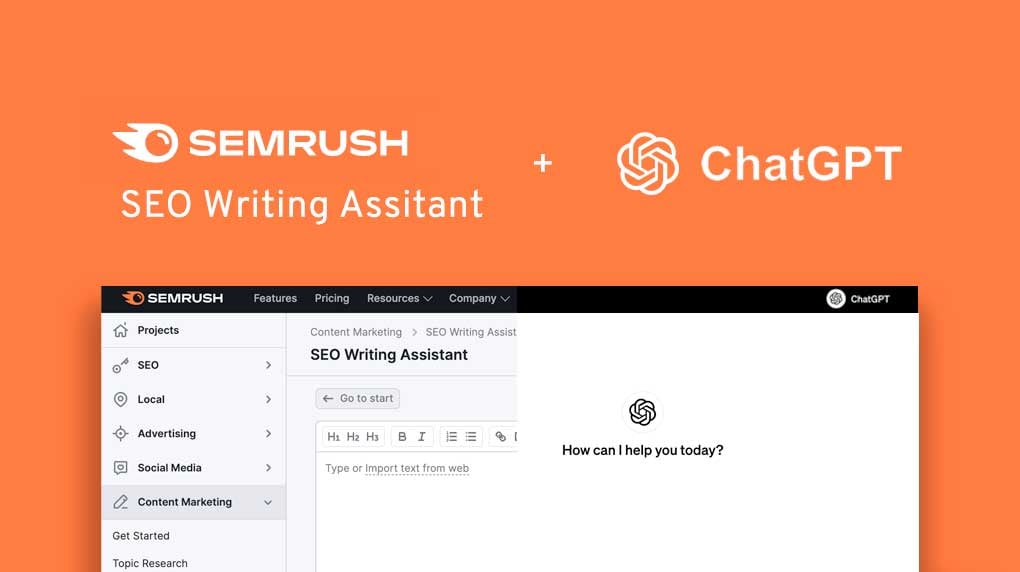
In a perfect world, every successful campaign would deliver big, show-stopping wins for your brand.
But in the intricate world of digital marketing — and faced with the realities of budget limitations, tight timelines, and evolving competition — you can’t expect all of your wins to be a seismic shift for your business.
Instead, you can drive awareness and growth through marginal gains: small, consistent wins that add up to a bigger impact over time. Those marginal gains play a pivotal role in enhancing the visibility of your brand. Specifically, they’re a crucial part of an effective SEO strategy for any YMYL (Your Money Your Life) business.
“Marginal gains” are a training philosophy that emphasizes the importance of making small improvements in many areas, rather than focusing on a single element of your website, campaign, or business. The idea is that, in aggregate, these small improvements across different areas can lead to significant overall results.
In web development and digital marketing, marginal gains refer to the cumulative impact of incremental improvements in content, page performance, links, and any other area you can think of.
This idea highlights the importance of paying attention to the small details of a project — and continuously seeking ways to improve performance across various aspects of your business, rather than fixating on one or two big, expensive updates.
This can help businesses to reach their goals more effectively and increase their chances of success.

A Your Money, Your Life (YMYL) business has the potential to significantly impact the health, finances, or general well-being of its audience. Think banks, news bureaus, or businesses that provide medical advice, for example. These organizations go beyond a normal brand/consumer relationship, meaning that their content might need to be held to a higher standard of accuracy or quality.
Of course, that isn’t always an absolute distinction.
After all, breaking news about an extreme weather event and updates on a celebrity breakup might both come from the same site. But obviously, they aren’t equally urgent. A brand’s impact on its audience can vary across business units, different sections of its site, or even individual pages and posts.
What’s important to know is that, as far as Google is concerned, any pages that fall into the YMYL category are held to a higher standard. Placing in users’ search results and winning over Google’s ranking algorithms will take even more diligence for YMYL content.
As such, this category can benefit from a marginal gains approach that works to improve all elements of a piece of content: keeping information up-to-date, being transparent about authorship and sourcing, and demonstrating the E-E-A-T (Experience, Expertise, Authoritativeness, and Trustworthiness) of that page.
Most often, a marginal gains approach is useful when you’re limited by the constraints of a project.
Imagine someone who wants to improve their site’s visibility but doesn’t have the budget for a big SEO campaign or is hesitant to buy into bigger changes. Maybe they’re skeptical about results — and hesitant to involve developers or copywriters due to those budget constraints.
Or, maybe you’ve been provided a roadmap with a big list of issues but have only been given vague key objectives for your SEO work. You can prioritize different tasks based on the effort needed and the impact they might have but you don’t have enough information to build a truly focused strategy.
If that’s the case, it’s likely that you’ll also have limited time for reporting, or will be limited by a lack of benchmark KPIs to measure performance against.
This can lead to broad objectives, like committing to “manage and improve SEO efforts for a brand in 2023,” or “actioning important SEO items to help improve digital presence.” They sound like good ideas, but don’t really provide a concrete direction for your work.
If you’ve found yourself in this situation, the key is to identify areas where you can make small, efficient improvements — and then focus on making consistent progress over time.
The benefits of marginal gains might already be clear. Particularly when you’re working from a position of limited budget and information, this approach means:
You really do not need a lot of available hours to make effective marginal SEO gains for a business. To give you a more specific sense, Major Tom has put this approach into practice using under 5 hours per month.
That will also take some administration and communications sacrifices, though. For example, on those projects we’ve skipped unnecessary status meetings and extra calls, narrowing communication down to an email exchange. This helps you work extremely efficiently. But be warned, it can also make it harder to adjust to new priorities and information.
If you’re a brand looking for an agency partner, building a trusted relationship with your agency can be worth the extra investment.
When applying the Aggregation of Marginal Gains approach, there are a few common pitfalls that you should be aware of.
Knowing these pitfalls will help you get the most out of this concept, and set realistic expectations about your needs and results:
One of the key principles of the Aggregation of Marginal Gains is making small improvements consistently over time. It’s important to avoid the pitfall of being inconsistent with your efforts. Consistency is key to achieving long-term progress and reaping the benefits of cumulative improvements. If you’re brought on for a short-term fix or can only work in inconsistent intervals, you’re not likely to see results.
While it’s important to focus on making small improvements in various areas, it’s equally important to keep the big picture in mind. Avoid getting too caught up in the details and losing sight of your overall goals and objectives. Regularly reassess your progress and make sure that your efforts align with your broader aspirations.
The Aggregation of Marginal Gains is about making small, incremental improvements. You need to be realistic about your budget and the scope of the work. Avoid overcomplicating things by trying to tackle too many changes at once or making changes that are too drastic. Instead, focus on identifying a few key areas where you can make small improvements and build on them over time.
The Aggregation of Marginal Gains is a long-term approach that requires patience and persistence. You shouldn’t expect immediate results, or get discouraged if you don’t see significant changes right away. Whether you’re setting expectations or planning future milestones, don’t expect overnight progress. Remember that small improvements can compound over time and lead to significant gains in the long run.
To effectively apply the Aggregation of Marginal Gains, it’s important to track your progress and measure the impact of the changes you’re making. Without tracking your progress, it can be difficult to determine what’s working and what’s not. Consider keeping a journal or using tools to monitor your progress and adjust as needed.
Most importantly, remember that a marginal gains approach is not for every company. The impact of small improvements in these areas may be subtle. It will almost certainly take time to manifest.
But if SEO is not your primary source of marketing revenue and isn’t a priority for your upcoming projects, then a marginal gains approach helps you stay alert. It also shows Google you are doing something and helps maintain the interest of its ranking algorithms, rather than not doing anything and losing traffic.
Because at that point, well, what’s the point at all?
Let’s get specific. If you’re committed to a marginal gains approach and understand the advantages and the pitfalls, how do you actually implement these improvements within your SEO strategy?

This might go without saying, but you can’t skimp on the actual content filling your pages. No matter how compelling your calls to action or how intuitive your user journey is, your content needs to give the audience a reason to stick around.
Be sure you:
This is a cornerstone of an effective strategy for local businesses. Ensure you’re taking steps to improve visibility at a local level, like optimizing your Google Business Profile and targeting geographically relevant keywords that match searches from prospective customers nearby.
This allows businesses to connect with their local audience effectively and draw foot traffic, when relevant.
Every on-page element, from meta titles and descriptions to image alt texts, needs to be meticulously optimized. This can be a time-consuming, detail-oriented process, but you can make some efficient improvements:

User experience is integral to SEO success. A classic piece of SEO wisdom is that you should write content for people, not for algorithms — and that a user-focused attitude should inform everything on your site.
When optimizing key pages, be sure to consider the devices that your audience is most likely to use. For example, if users for a key page come mostly from mobile, the Major Tom team will focus on mobile responsiveness or key point pages.
This can help focus your work when you’re short on time or budget. Remember, a beautiful desktop site that users only experience as an unresponsive mobile mess won’t win you any fans.
Don’t forget that a strong user experience goes beyond your content. Your site’s navigational structure should also provide a seamless and enjoyable user experience.
Remember that your general approach to marginal gains SEO will vary from a more regimented strategy.
This process is more agile, so you should be ready to quickly decide and deploy, then check if a change works. If not, leave or revert it, but avoid burning too much time and budget analyzing why these changes didn’t land — instead, think of them as ongoing opportunities to experiment and optimize. Remember, we’re working with a hypothetical monthly budget of around 5 hours, so every moment spent second-guessing your choices comes with a heavy opportunity cost.
Similarly, don’t write off changes just because they seem insignificant. For example, it is better to improve 1% of blog posts by adding images that have a chance to rank in Image Search, than to abandon that slight audience growth entirely. Marginal gains SEO is a game of inches.
If every win in a marginal gains SEO strategy is a small one, how do you track those improvements? And how do you demonstrate their larger impact?
There’s no need to buy fancy software, although it won’t hurt! Taking the time to organize your data in a simple spreadsheet can do the work. In Major Tom’s marginal gains SEO projects, spreadsheets have acted as a change log and strategy brainstorming document, all in one place. Centralizing your documentation will help save time throughout the process.
Through the power of marginal gains in our monthly local SEO strategy, Major Tom has been able to empower YMYL businesses to achieve sustainable growth and enhanced online visibility.
This approach is a good reminder that even if you lack the time and budget to deliver a show-stopping campaign, you can still make tangible, impactful improvements to a brand’s presence online. By building trust and establishing authority through small, incremental changes, you can ensure that these businesses thrive in a competitive digital environment.
Making small improvements and slow gains may not be an exciting pitch, but it can have a significant impact on your company's performance in the long run — earning C-Suite buy-in or helping it grow into bigger opportunities.
To learn more about Major Tom’s thoughts on SEO and web strategy, subscribe to our Mercury blog.
Receive exclusive action-focused content and the latest marketing insights.